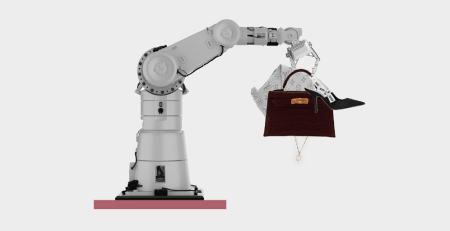How Fast Fashion Impacts The Planet
The environmental crisis has been looming over us for decades now. Between waste, water pollution, and carbon emission, our hands are full, and it is overwhelming. Countless organizations and campaigns spread awareness of our harmful everyday practices and shed light against the industries accountable for these environmental issues. Environmentalists point their fingers out at the responsible sectors, and the textile industry is not spared.

It is hard to convince ourselves that our love for fashion and clothes hurts the planet. As we all know, the Fashion industry is built on temporary trends which appear as fast as they disappear to end up reemerging later. It’s an endless cycle that had taken the high-speed road these last few years with the rise of fast fashion, the population, and social media. We all have witnessed those rapid changes. One day everyone is wearing floral printed dresses the next, you are committing an enormous fashion faux pas if you dare to even glance at them.
As fun as it is to reinvent yourself, style and fashion-wise frequently, this practice is harmful to our planet, and here is why.
Water Waste
It is said that 1800 gallons of water are needed to produce a single pair of jeans. Our timeless, beloved denim has been considered a fashion essential in the wardrobe for decades now. Jeans were first popularised during the mid-20th century as the American lifestyle spread across cultures and continents. Since then, millions of people all over the world are cladding themselves in jeans.
Therefore it isn’t hard to imagine the excess water used to produce these popular trousers. It is used throughout the value chain, from growing cotton to consumer care. 1kg of cotton required 20,000 litres of water to make. Besides the water used for the production isn’t any water. Two hundred tons of freshwater is used to produce a ton of dyed fabric.
Apart from the water used in the production and finalization of clothes, many wastewater toxic substances end up in our seas from textile workshops, spreading across their poisonous chemicals such as mercury and arsenic in the waters.
Especially, in Asia where many workshops are located in countries such as Bangladesh, India and China, contamination with chemicals involved in clothing production touches 70% of their rivers. However, they spread beyond borders and find themselves polluting neighbor oceans.
Among the chemicals essentially used in our clothes’ production, 11 are considered detrimental to our well-being. Their usage is predominant in fiber production, dyeing, bleaching, and wet processing. Cotton farmers also handle strong chemicals which endanger their life and degrade our soil. It doesn’t end there as dangerous chemicals find their way throughout the value chain, from soil extraction to the end-consumers hands.
Textile Trash
Every year tons of textile trash generate. In America, it amounts to 23 million tons each year, which is only for that continent. Only 15% of discarded clothes are reused or donated in a western family; the rest is buried in landfills or incinerated.
Carbon Emission
Between pesticides and insecticides, the textile industry is riddled with chemicals that impact 10% of the global carbon emissions. 1.2 billions tonnes of greenhouse gas emission is released every year from the fashion world. From the production to the transportation of our garments, a lot of energy is required.
The Rise Of Clothing Production
According to Greenpeace, clothing production doubled between 2000 and 2015. In America, it amounts to 14 million tons a year, twice the amount from two decades ago.
On the one hand, the worldwide population’s growth these last two decades is an obvious culprit. On the other hand, the popularity of fast fashion is not an innocent bystander in this crime. Indeed, fast fashion trends push consumers to discard clothes as soon as they hit their closets, striving to keep up with the industry’s fast pace.
The Deforestation
Water is not the only resource used in the production lines; woods are the oil that runs the machine. Ancient forests are wiped down for the sake of plantations of trees of specific wood used for fabric like rayon, viscose, and modal. This loss of forests is threatening the ecosystem and indigenous communities, as in Indonesia, large-scale deforestation of the rainforests has taken place over the past decade.
As far as our love of clothes goes, it cannot replace or be a substitute for the love of our planet. It doesn’t mean we shouldn’t buy what we want but to consume more ethically and recycle our clothes to reduce the impact that it causes for our planet. Yes, style is eternal, but the days of our planet are counted.











